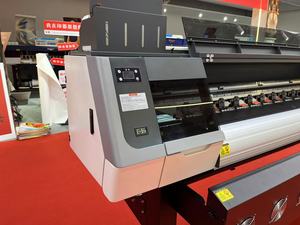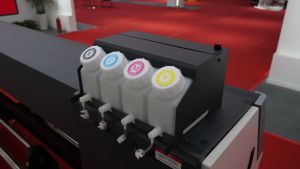
All categories
Featured selections
Trade Assurance
Buyer Central
Help Center
Get the app
Become a supplier

(1328 products available)



























Tarpaulin cutters are specialized tools designed for cutting tarpaulin materials accurately and efficiently.
Electric tarpaulin cutters
An electric tarpaulin cutter refers to electrical cutting machines that use electricity to cut tarpaulin materials. Electric cutters for tarpaulin come in many different options. Some examples include the electric hot cutter and straight electric cutters. Electric tarpaulin cutters offer precise cutting for tarpaulin materials. Most electric cutters automatically cut the material when the temperature is reached. This makes it easy to handle the cutter. The downside to an electric tarpaulin cutter is that it requires a power source to operate it.
Manual tarpaulin cutters
A manual tarpaulin cutter refers to cutting tools that an individual must operate by hand to cut the tarpaulin material. Some examples of manual tarpaulin cutters are scissors, rotary cutters, straight blades, fabric shears, and utility knives. Scissors for tarpaulin are not ideal because they distort and stretch the material. The great thing about a manual tarpaulin cutter is that it doesn't need a power source or electricity to operate. However, unlike the electric ones, manual tarpaulin cutters are not automated.
Pneumatic tarpaulin cutters
The cutter is powered by compressed air or uses pneumatic power to cut through heavy and thick tarpaulin materials with precision. This cutter offers fast and efficient cuts. They also have minimal distortion to the material when cutting. One downside to pneumatic tarpaulin cutters is that they require a constant air supply.
Size range:
Depending on the design and application, tarpaulin cutters can cut different sizes of tarpaulins. Usually, they can handle widths and lengths of up to a few meters. For instance, manual tarpaulin scissors may be able to cut a tarp up to 2 meters in width. In contrast, bigger versions with stronger blades, like electric or pneumatic cutters, might handle broader and extend further.
Cutting method:
Various kinds of tarpaulin cutters use different cutting methods. Tarpaulin cutters employ the manual method, such as scissors, by squeezing the handles together to cut through the tarp. On the other hand, electric, laser, and hot wire cutters utilize electricity to perform their respective cuts.
Power source:
Depending on the kind of cutter, the power sources differ. While pneumatic cutters rely on air pressure and require an engine or compressor driven by gasoline motors, electric cutters are powered by electricity and plugged into an electrical outlet. For instance, an electric tarpaulin cutter is powered by compatible power sources ranging from around 500 to 1500 watts.
Cutting thickness:
Each cutter has the capacity to slice through specific thicknesses of tarpaulin material. Manual scissors may be able to cut through thinner tarpaulin materials, while electric cutters and others can handle thicker ones. For instance, heavy-duty tarpaulin cutters can cut up to 5 mm in thickness.
Cutting accuracy:
Precision is paramount when it comes to cutting tarpaulins, especially for industrial applications. Some models are able to achieve accuracy levels down to +/- 1 mm. For instance, laser cutters are among the most accurate tarpaulin cutting methods, achieving precision cutting.
Regular cleaning:
After each use, it's essential to wipe the cutter with a clean, dry cloth to remove any tarpaulin debris and dust. Water and a mild detergent can be used to clean washable parts but avoid getting electric components wet. Cleaning prevents material buildup that can diminish a cutter's performance over time.
Lubrication:
Greasing the moving parts of the cutter, like the hinges and blades, on a regular basis helps to keep it operating smoothly. This decreases friction and makes cutting easier by prolonging its life. Oil used in machinery or lubricant can be used sparingly to keep the equipment in good condition. Lubrication will help reduce part wear more effectively.
Blade maintenance:
Tarpaulin cutter blades are their most important component parts. It is necessary to keep them sharp in order to preserve cutting precision and cleanliness. Blades should be regularly inspected to ensure there are no damages. Damaged blades should be repaired or replaced as soon as possible to avoid compromising cutting quality. For example, a dull blade can cause ripping and uneven edges on the tarpaulin.
Tarpaulin gives a tough, reliable cover that will not rip easily. Using a tarpaulin cutter on the tarp will give a precise, clean-cut edge. This tool helps people get through various tasks with ease and efficiency.
The most common industry to use tarpaulin cutters is the advertising one. Large-format banners made with tarp materials are hung outside to promote businesses. Eyelets are used in the perimeter, and strong seams are applied so that the banners can be easily suspended using ropes or poles. When cutting the banners, a tarpaulin cutter is used because the material is thick and sturdy.
In construction, tarpaulin sheeting is commonly used to cover parts of buildings, protect them from external environmental factors, or act as temporary shelters. The material is transparent and allows sunlight to shine through. When working on sites, builders require precise cuts to make custom-sized sheets. A tarpaulin cutting tool comes in handy because it can cut through any material without tearing or damaging it.
In the transportation industry, tarpaulin cutters customize cargo nets and tarps for trucks. This helps secure the goods when transporting them, especially off-road or on rough terrains.
Outdoor enthusiasts, such as campers and hikers, also use tarpaulin cutters. When setting up a tent at a campsite, they will need to protect the tent fly from water pooling. Therefore, a tarpaulin is used to create custom rain diverters. The tools are used because they require clean and precise cutting.
As demonstrated above, tarpaulin cutting tools are versatile. They are used in various industries ranging from construction, advertisement, automotives, and logistics to create custom-sized tarpaulin sheets for different applications.
Business buyers, such as fabric manufacturers, repair shop owners, and construction supply wholesalers, should consider the following factors when buying a tarpaulin cutter.
Cutting Capacity
Business buyers should choose a tarp cutting machine with a suitable cutting capacity for their applications. Consider the maximum size and thickness of tarps that the cutter can handle. Ensure that it aligns with the business's specific requirements to avoid any limitations or complications during operation.
Cutting Accuracy and Quality
When selecting a tarp cutter for commercial purposes, it's essential to prioritize the machine's cutting precision and quality. Opt for a cutter that guarantees clean, precise cuts without frayed edges. This will help maintain the professional appearance of the finished products and reduce the need for costly rework or repairs.
Durability and Build Quality
Durability and build quality are crucial aspects to consider when choosing a tarp cutter for commercial use. Select a machine that is constructed with robust and high-quality materials, capable of withstanding regular, intensive use without succumbing to rapid wear and tear. Investing in a durable and well-built cutter ensures long-term reliability, minimizing the need for frequent replacements and maintenance costs.
Safety Features
When purchasing a tarpaulin cutter for business use, it's crucial to consider the safety features it offers. Opt for a cutter equipped with protective guards, emergency stop buttons, and safety interlocks to minimize the risk of accidents and injuries to operators. Prioritizing safety features ensures a secure working environment and promotes the well-being of personnel.
Ease of Use and Versatility
Selecting a versatile and user-friendly tarp cutter is important to commercial operations. Look for a cutter that is easy to operate and adjust, minimizing training time and boosting productivity. Additionally, consider machines with various cutting modes and sizes, ensuring they can accommodate different tarp types and meet changing business needs.
Maintenance and Service Support
When purchasing a tarpaulin cutter, it's important to consider the maintenance requirements and service support provided by the manufacturer. Inquire about the maintenance needs of the cutter and ensure it can be easily maintained to prevent downtime. Additionally, research the availability of service support and spare parts to ensure timely assistance in case of any issues that may arise during operation.
Q1: What are the benefits of using a tarpaulin cutting machine?
A1: The efficiency of cutting tarpaulin is increased significantly with the use of a tarpaulin cutter, especially for large-volume production runs. The machine also brings accuracy, consistency, and time and labor savings.
Q2: How can one ensure the durability and longevity of the tarpaulin cutter?
A2: It is important to conduct routine maintenance checks and promptly repair any defects. Use the cutter appropriately to avoid tarpaulin material that is too tough or high indescribable settings. Select strong cutters built, and follow the manufacturer's maintenance instructions.
Q3: Can a tarpaulin cutter be upgraded with additional features?
A3: Many tarpaulin cutters can be upgraded with additional features, such as electronic controls, automated feeding systems, or advanced safety mechanisms. Discuss your specific requirements with the manufacturer to explore possible customization options.
Q4: Are there any safety precautions when using a tarpaulin cutter?
A4: Yes, wearing safety goggles and gloves and following the manufacturer's instructions are important. Operators should avoid placing their hands near moving parts and ensure that the cutter is properly grounded and installed.